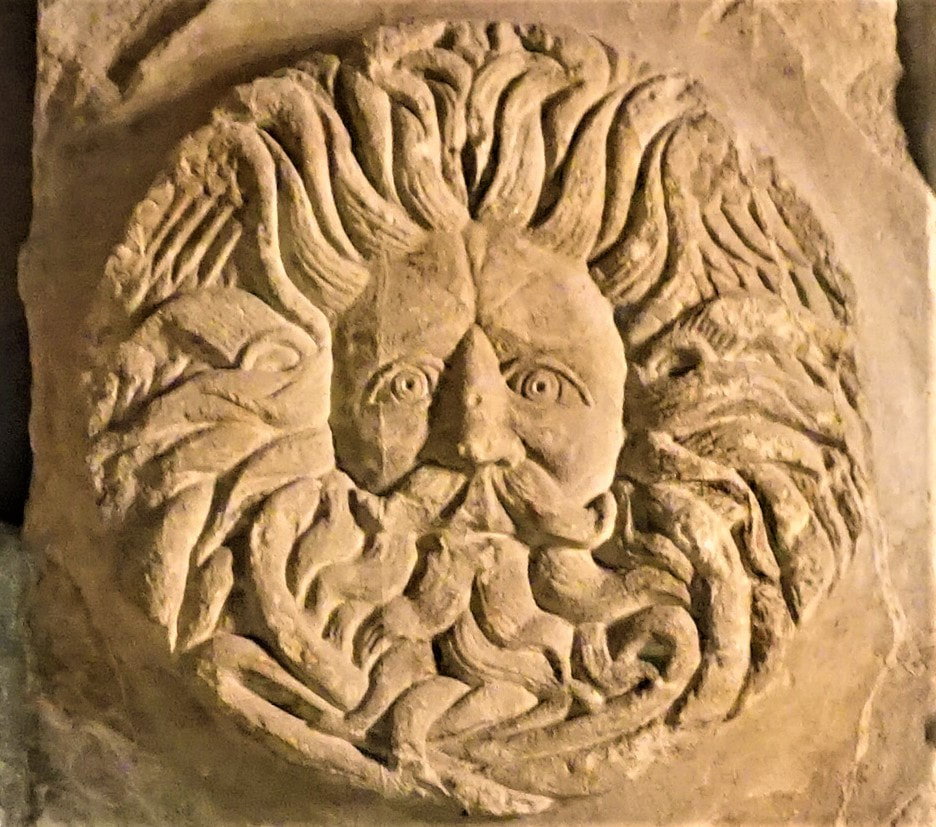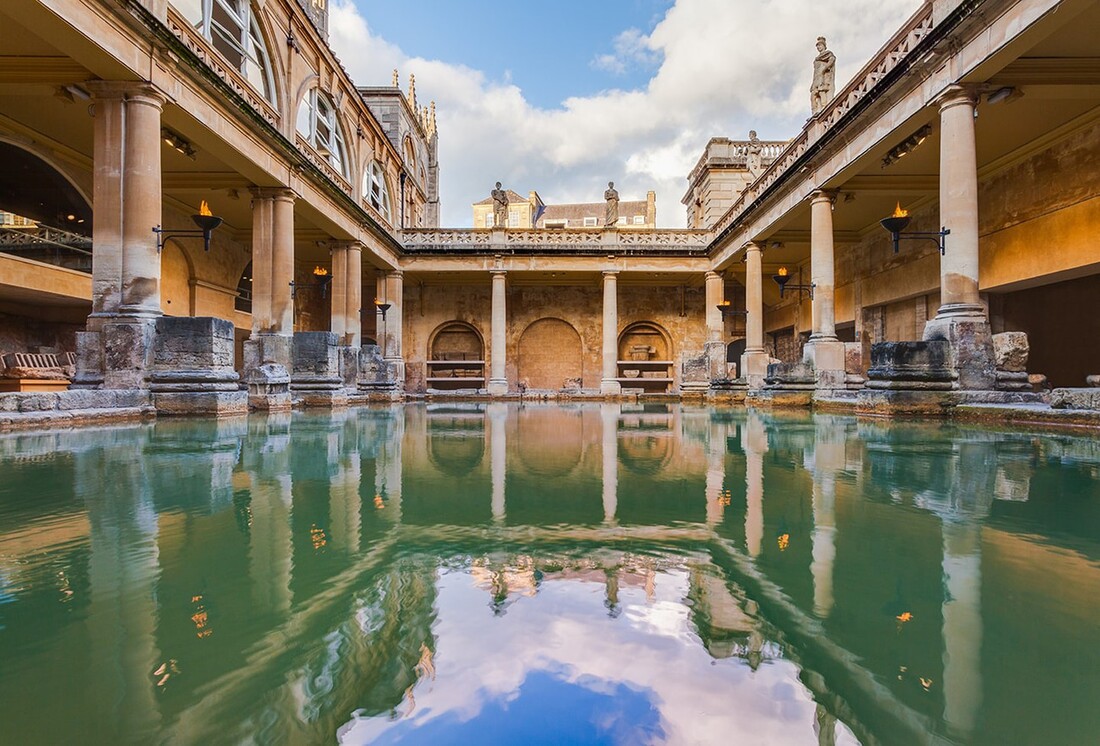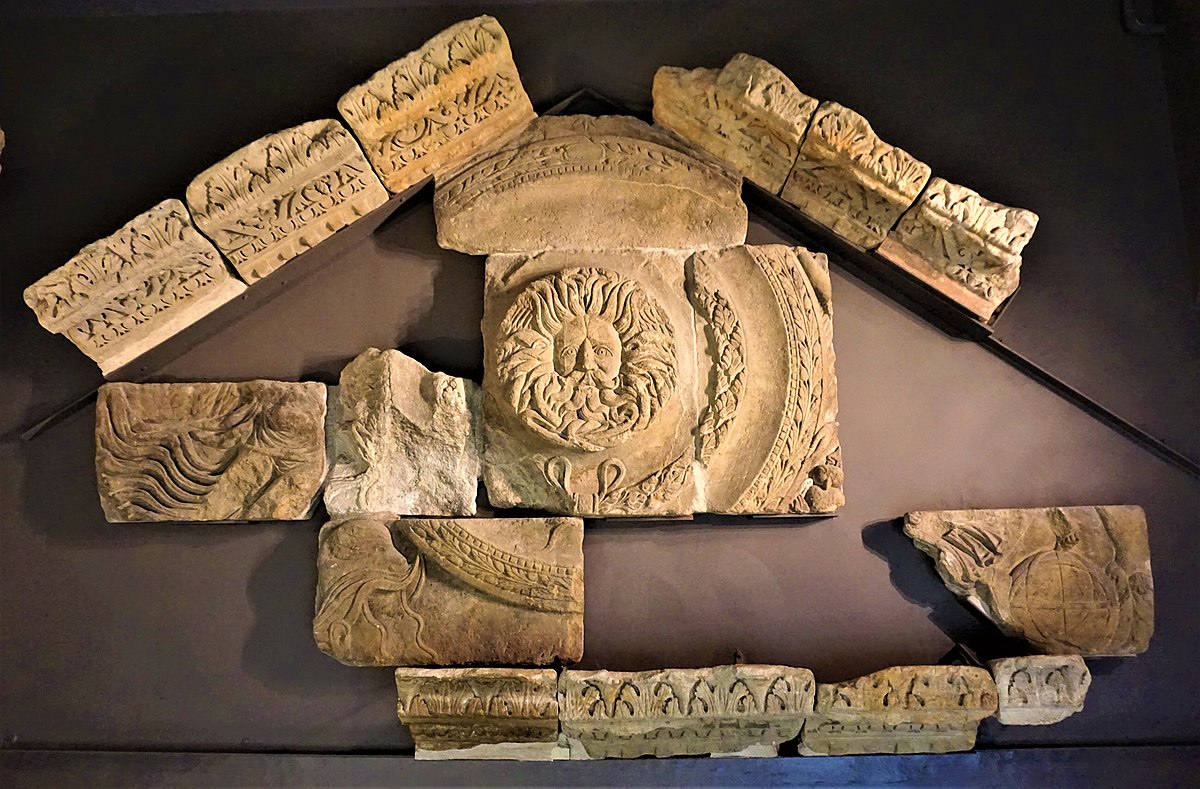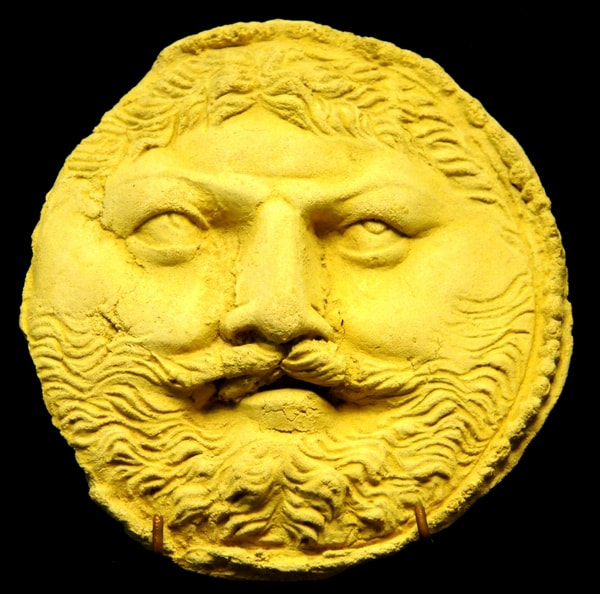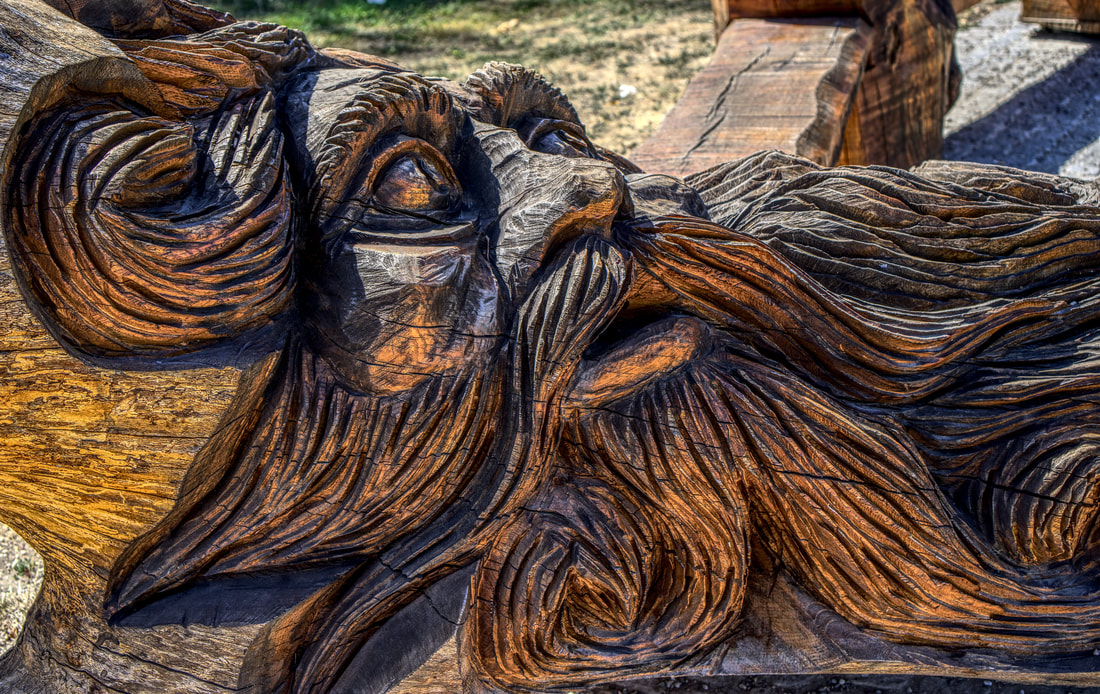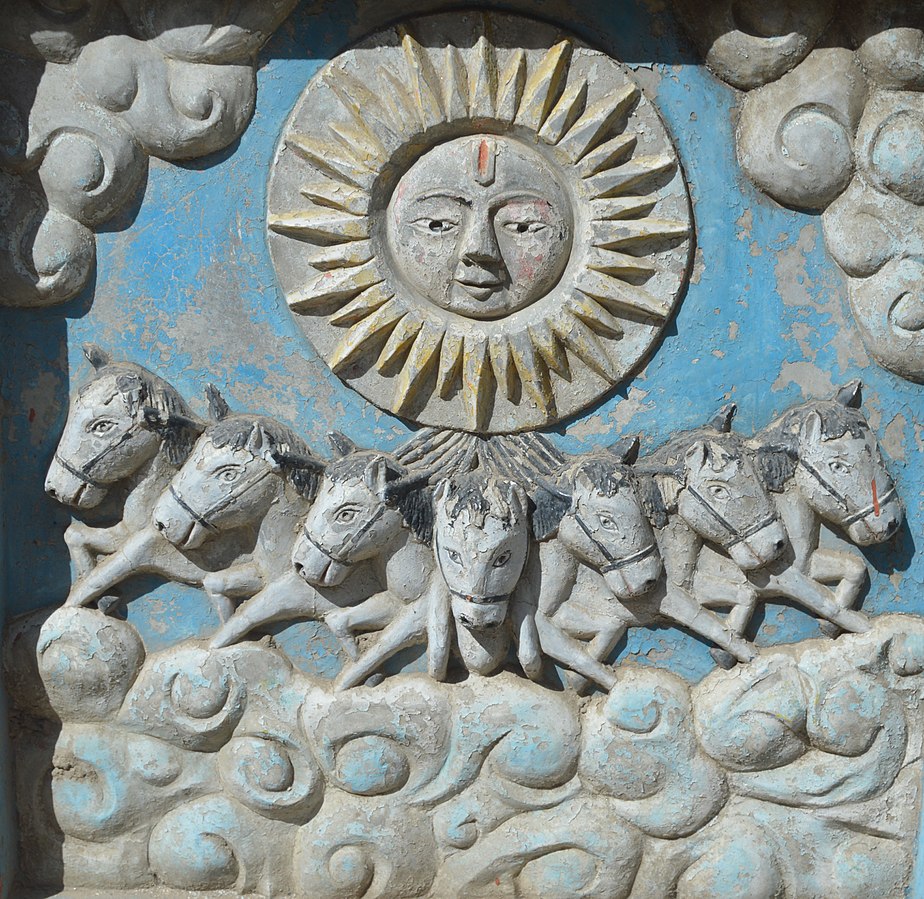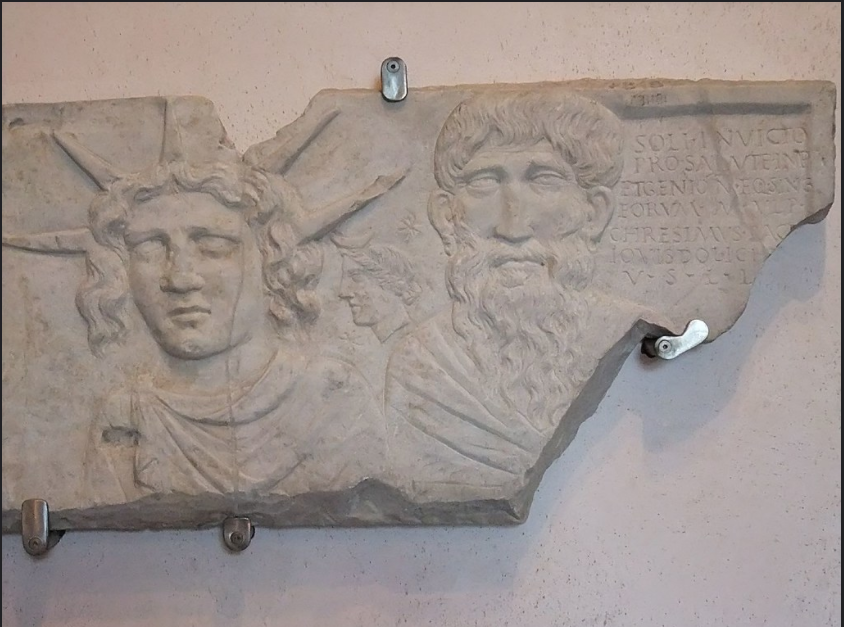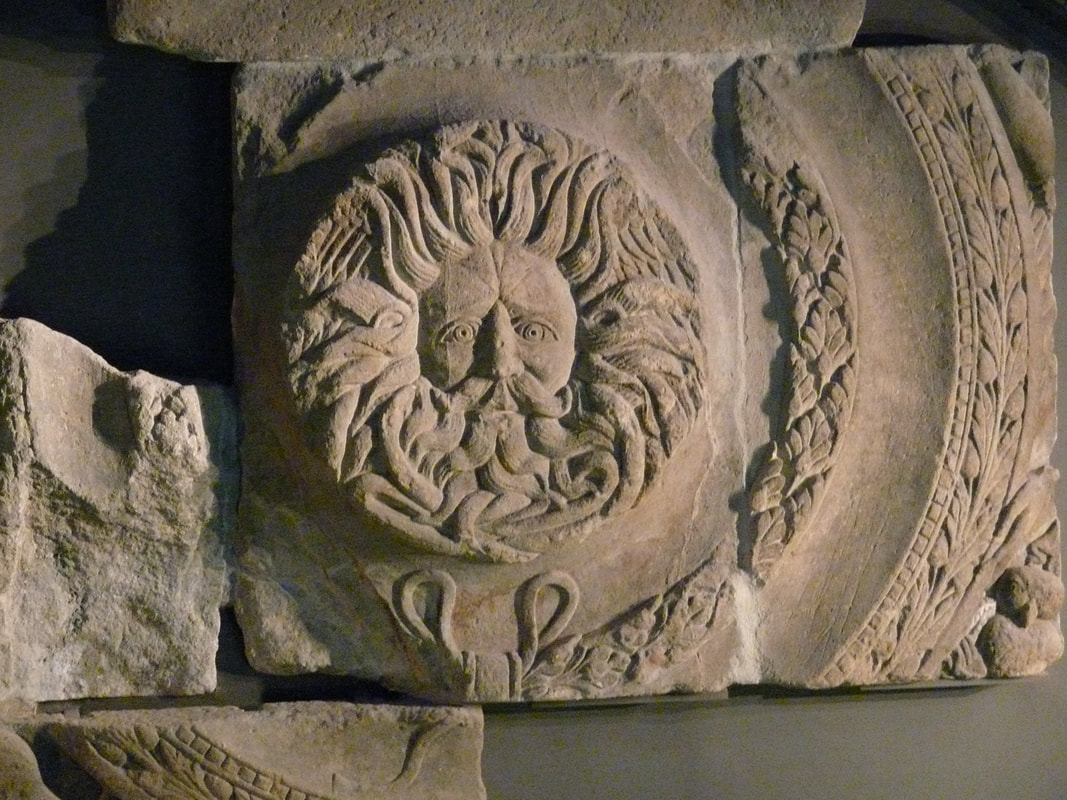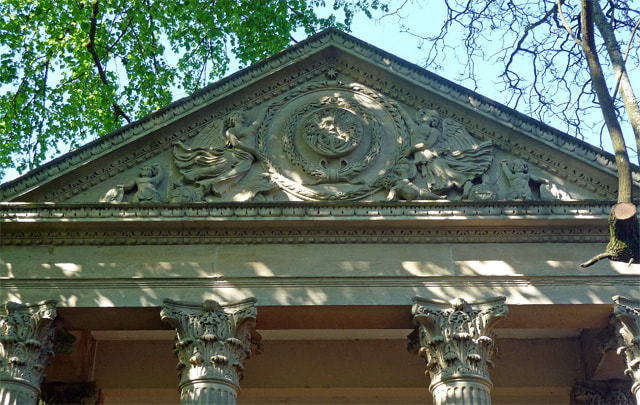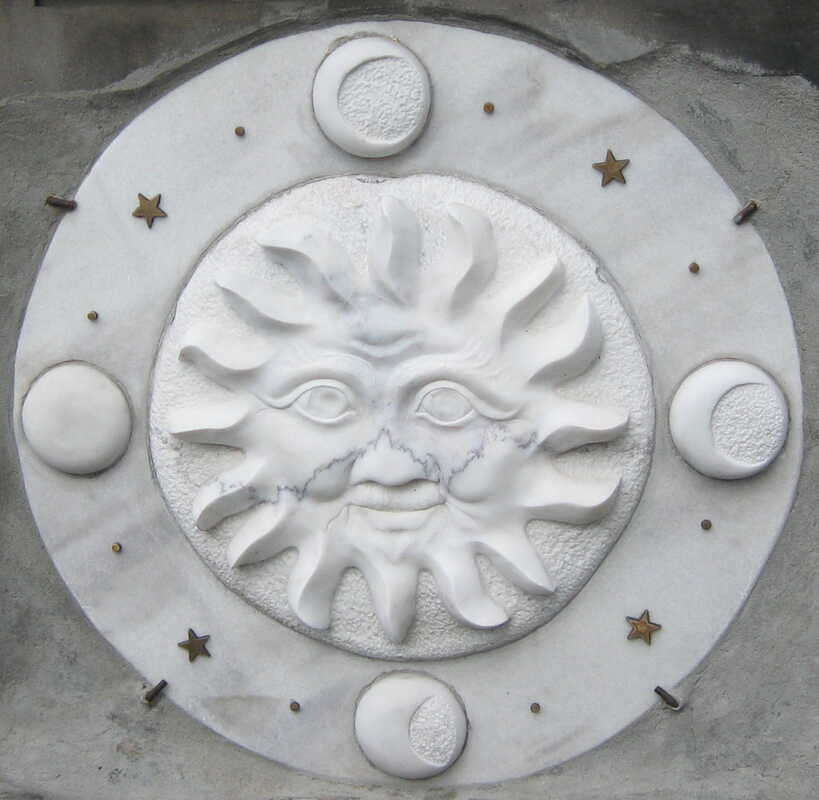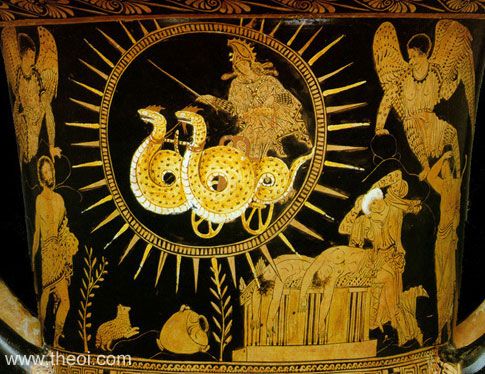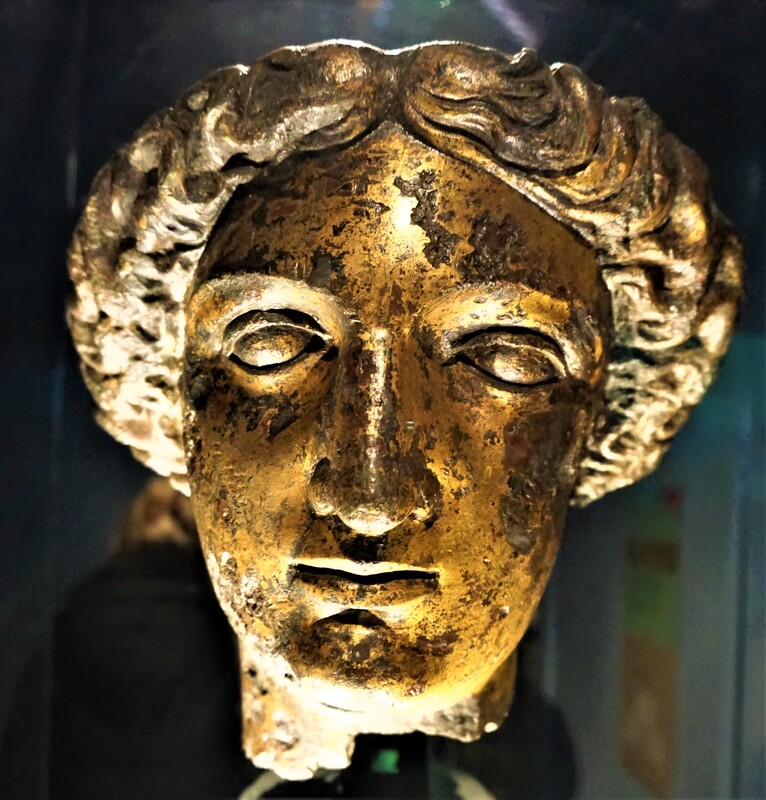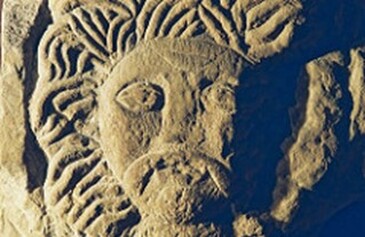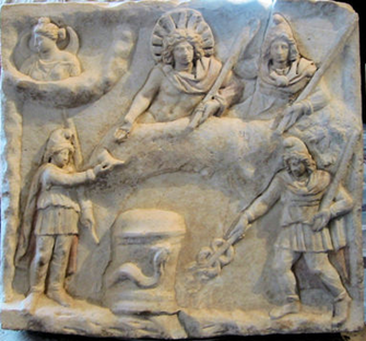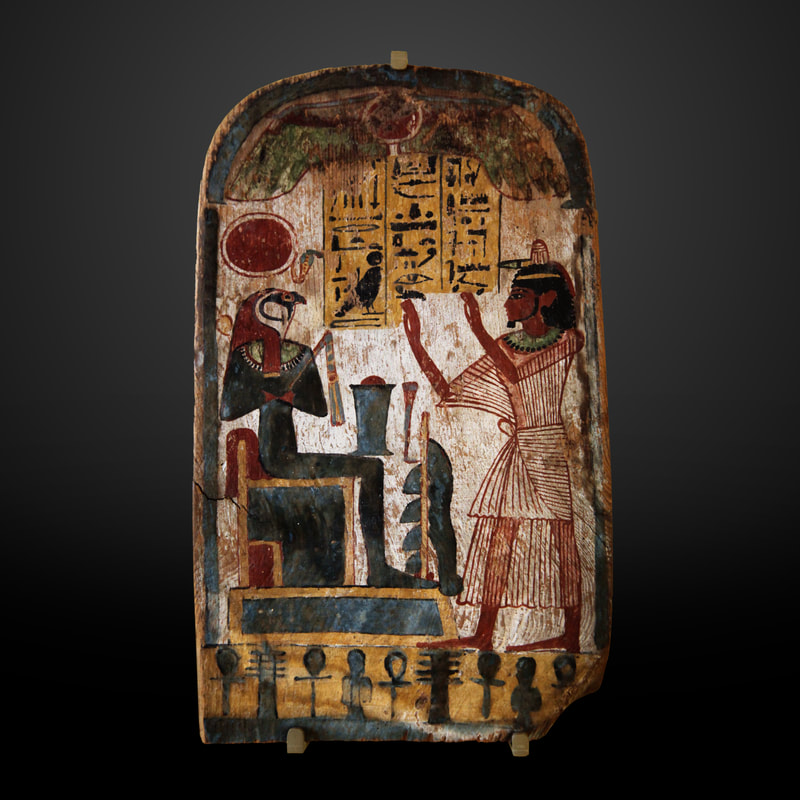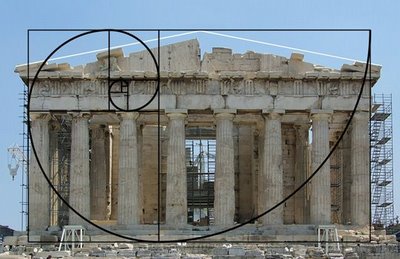The Sol-Gorgon Mystery at the Roman Baths
by Edward Durand
|
The ‘Gorgon’s head’ is an ancient carving of a face on the centre of the temple pediment at the Roman Baths in Bath, England. It oversees the ancient temple complex that housed the sacred spring of Sulis-Minerva and the Roman healing baths built up around it. People have come to the thermal spring at Bath for thousands of years and the Romans built an extensive complex of baths and a temple around it. A million litres of hot water bubbles out of the ground every day. The spring gave the name to the original town of Bath – the Romans called it Aquae Sulis, which means the waters of Sulis. Sulis was the Celtic goddess of healing and wisdom that the spring was dedicated to. The Romans identified Sulis as Minerva and called her Sulis-Minerva to appease everyone. The mystery is who the carving on the temple represents.
The carving on the front of the temple is called ‘the Gorgon’s head' as its long wavy fronds of hair and especially beard resemble the snakes in the hair of a Gorgon. It sits amid the triangular top of the temple, the pediment, with gazing all-seeing eyes; a guardian watching over those who come to worship at the temple and bathe in the sacred healing spring waters. The mystery is a mythological one: who is the ‘Gorgon’?
The Gorgons were the three daughters of Phorcys and Ceto. They had snakes in their hair and the tusks of a boar. The most famous is Medusa, the mother of Pegasus, who was killed by Perseus and whose head was mounted on Minerva’s shield. The ‘Gorgon’ at the Roman Baths is not female, does not have clear snakes in his hair and does not have tusks of a boar. So it is unlikely that it is meant to depict a Gorgon. There are at least two strands in the beard (and perhaps in the hair) that resemble snakes but whether they are or not he looks much more like a Sun God to me than a Gorgon. The carving is thought to be a Gorgon because there was a Gorgon’s head on Minerva’s shield and it is the temple of Minerva, but the Gorgon whose head was mounted on her shield was Medusa who was definitely female. It is said that her beauty was compared favourably with that of Minerva herself so the goddess in a fit of jealousy turned Medusa into a Gorgon so that she would no longer be described as ‘more beautiful than Minerva herself’. To me the hair and beard of the ‘Gorgon’ resemble the rays of the Sun, with flaming hair. There are other depictions of the Sun in a similar way. The fronds of hair flowing from the head of the ‘Gorgon’ taper to a point like depictions of rays of the Sun or tongues of flame, not like snakes. The Celtic word Sul, the root of Sulis, means eye or Sun. Sol is the Roman name for the Sun and Apollo was the Roman Sun god and a god of healing. It would be fitting to have a god of healing at a healing shrine. The Roman baths at Cyrene in Libya have a temple dedicated to Apollo, use water from the fountain of Apollo and are in the sanctuary of Apollo. The water is said to have curative properties. Apollo is usually depicted clean shaven but the ‘Gorgon’ could be to appease the hairy Celts or it could be Sol, the spirit of the Sun itself. Sol is the Roman name for the Sun and Apollo is the Roman (and Greek) god of the Sun (Just as Sophia is Wisdom Herself and Minerva-Athena is the goddess of wisdom).
The ‘Gorgon’ is a male deity balancing out Sulis-Minerva for those who prefer the male aspect of deity. The case has been made that he might be a sea god such as Neptune or Oceanus. His hair and beard do flow a bit like waves, it is a place of water and they are depicted with beards so it is possible that is another syncretic aspect to him. Some see the resemblance with the Celtic ‘Green Man’. Some have thought the ‘Gorgon’ to syncretically combine elements of two beings and two cultures, like the way Sulis and Minerva were combined as Sulis-Minerva to please both the Celts and the Romans. it’s not impossible for him to be a being of both Sun and water, a composite deity created by the Romans to combine the elements to try to please everyone. A syncretic solar/marine deity would echo the fire and water symbolism associated with Sulis. A deity bridging fire and water would also bridge Heaven and Earth. I don’t think he is quite such a mishmash but one being with some of those qualities. It seems to be primarily a solar deity. The ‘Gorgon’ could be a syncretic mix of a Roman Sun god with rays coming out of his head with a typical Celtic mustached or bearded style. Apollo was originally a triune deity, three gods in one, so one of them could have a beard.
The temple courtyard at Bath was dominated by the ‘Gorgon’ on the top of the front of the temple to the West, the direction the Sun travels in. The ‘Gorgon’ oversees the temple courtyard adorning the top of the temple itself. To the North is the Luna pediment with a depiction of the Moon goddess. Opposite her is the Sol pediment fronting the building that houses the sacred spring, presiding over the waters, perhaps implying a connection between the hot spring and the patronage of the Sun god. Sol and Luna complement each other like the forces of male and female, yang and yin, fire and water etc. The polarity of Sol and Luna echoes the polarity of Sulis-Minerva and the ‘Gorgon’, and the fire and water elements of the hot spring, of Sulis and perhaps of the ‘Gorgon’. Like Sulis, the Gorgon may have aspects of both fire and water if he is a marine as well as a solar deity. The temple courtyard also has the polarity of male Doric (plain) columns and female Corinthian (ornate) columns instead of neutral Ionic columns. The depiction of Sol is clean-shaven like depictions of Apollo, the ‘Gorgon’ is in more of a Celtic style with a beard and Western European features. In the middle of the courtyard was the altar.
The temple pediment at Bath also has tritons (mermen) who could be there because it is a place of water, but not necessarily indicating that the ‘Gorgon’ is a sea god. Romans believed in water spirits that could bestow blessings if a gift was offered to them. The pediment also has two helmets, one with an owl (symbol of Minerva and wisdom). The pediment truly is a picture that tells a thousand words. There are temple pediments elsewhere that are similar and may give us clues as to the identity of our mystery god. The Apollo pediment has elements in common such as the globes and the abundant foliage. The face which mounts this pediment has rays emanating from it like our ‘Gorgon’, it definitely looks like a Sun and not a Gorgon.
There is a crypt in Italy dating from Roman times called the Hypogeum of the Volumnis. It has a pediment with a similar being in the centre. They describe it as either Apollo or a Gorgon with either Sun rays or scales emanating from the face. There are other faces there that are thought to be incarnations of Apollo. It does not have snakes and does not look like a Gorgon. As you can see in the picture it more closely resembles a Sun, clean shaven like Apollo, and with other associations with Apollo it seems much more likely it is the Sun god. There is a ‘Temple of Minerva’ in Sydney Gardens in Bath that has a pediment like the one at the Baths. It is a late nineteenth century copy that exaggerates the serpentine aspects of the ‘Gorgon’s head’ to make it look more like a Gorgon. It also replaces the Corinthian helmet of Minerva with a child.
The Sun was highly revered in the ancient world. The Sun and serpent are common mythic themes that go together in many ancient cultures but often the Sun is dominating the serpent like St. Michael with his foot on the serpent or Apollo slaying Python at Delphi. The Sun is a symbol of godhead, it was very important to the ancients, giving them light, heat, healing and life. Without electricity the Sun was vital for them so it was an important god to them. However “Snakes are frequently used in Greek literature as representing solar rays, and Helios is occasionally described as riding a chariot pulled by draconic beings instead of horses… Indeed, it [sic] possible that Apollo’s association with snakes actually comes from Helios: Apollo’s titles as “lord of the fiery serpents” and “charioteer of dragons” are all exclusive to a solar context, and given Helios’ own associations with medicine and prophecy, even snakes used in this context may actually had [sic] originally been part of Helios’ cult. Snakes, while often a chthonic symbol, especially in Greek paganism, are not alien as symbolic of the Sun.” 1 As serpents symbolise rays of the Sun, even if they are serpents on the ‘Gorgon’ it still probably is the Sun. Minerva also has links to snakes as Athena “In the very early times, she was represented with snakes in her hair and on the hem of her dress. Athena was originally a sun goddess, and the snakes in her hair may have represented the rays of the sun. There is some evidence that some early Middle Eastern sun gods were represented with long hair or snakes on their heads.” 2 Like Sol-Gorgon, the Egyptian Sun disc also has wings and serpents.
The polarity of Celtic and Roman cultures was smoothed over politically by blending the godesses Sulis and Minerva into Sulis-Minerva, and perhaps Celtic and Roman gods in Sol-Gorgon or Bel-Neptune as he may be. Let’s have a look at a couple of Celtic gods to see if they fit the description. Sucellis is a Gaulish god associated with agriculture and wine. He had many followers amongst Gallo-Romans and some in Britain. He seems to bear some resemblance to our ‘Gorgon’. The Romans coming through Gaul would have been used to using him to appease the nature-loving Celts. There is an inscription to him in York. The root of his name is Su which mean good or well and Cellos which sounds like Sulis. He may have been like a Gaulish Green Man, the ‘Gorgon’ has been likened to the Celtic Green Man whose face is adorned with foliage. Perhaps the Romans put him there to appease the Celts as the name Sulis reminded them of him. Belenus (Bel/Belenos/Belinus/Beli Mawr/Bile/Beal – not to be confused with Baal) is a Celtic Sun god who was the patron of the Italian city of Aquileia so the Romans would have known him. Belenos is the husband of Danu who is the mother of the gods of the Tuatha De Danann, gods of the Celts. “The name may be from a proto-Celtic Guelenos, containing a root for “Source, well”, suggesting identification as a god of healing springs”. 3
“An epithet of Belenus may have been Vindonnus. Apollo Vindonnus had a temple at Essarios near Chatillon-sur-Seine in Burgundy. The sanctuary was based on a curative spring. Part of the temple pediment survives, bearing an inscription to the god and to the spirit of the springs and, above it, the head of a radiate [sic] sun-deity”4 Sound familiar? There is a Druidic oracle called Suil-Beal (the eye of Bel). It may be etymologically connected with Sybil, the oracles of Greek and Roman legend. Another possible name for this Celtic Sun-god is Sul, etymologically connected with Sulis the goddess, but Sul was a Celtic name for the Sun. The Sun was usually seen as female in some Celtic countries but may have been seen as male here. As we follow the trail of this apparently solar deity he seems to go, like the Sun, from East to West. Apollo’s chariot travels from Greece, through Roman Italy and France and into Celtic Britain to find the local Sun god there also has a chariot. Belenus was also thought to ride the Sun across the sky in a chariot and was symbolic of and revered for the healing powers of the Sun’s heat. A perfect fit for a syncretic deity, but does it fit our ‘Gorgon’? Have a look at the pictures and decide for yourself. I will not answer the mystery for you but bring you to the threshold of your own understanding. The possible snakes in the Sol-Gorgon carving resemble the serpents on the caduceus of Mercury. Intertwined serpents are a common symbol in ancient mythology and archaeology. The winding serpents of the caduceus are thought to represent the ida and pingala energy channels from kundalini yoga. The wings of the caduceus could also be depicted as there are wings either side of the ‘Gorgon’s head’. In both Roman and Celtic iconography serpents represent healing, rebirth, wisdom and the duality of good and evil. They are sacred to Apollo. Like the Celts, the Romans were pagan and saw similarities and compatibilities between their religions, gods and cultures so they identified Sulis with Minerva. The Celts and Romans sometimes worshipped each other’s gods, so having both together as Sulis-Minerva meant both cultures could worship in the Temple of Sulis-Minerva at Bath. The Romans were used to appeasing conquered nations by accepting and amalgamating their gods or identifying them with their own. The Romans amalgamated their gods from the Greeks who may have inherited them from Egypt as some Greek gods have much in common with Egyptian gods. In the ancient world there wasn’t such a clear-cut distinction between different religions.
In the sacred geometry of Classical architecture the angles of pediments were based on the Golden Mean. For the measurements they used the sacred cubit which was based on the measurements of the Earth and the Sun. So the sacred geometry of many classical buildings, especially temples and pediments, was based on the relationship between the Earth and the Sun and thus the relationship between Heaven and Earth (as above, so below). So it is fitting for a Sun god to be in the centre of a pediment and is presumably one of the reasons that some pediments had a Sun god at the centre. Roman buildings were often built to catch the sun or direct a shadow, especially in the reign of Emperor Hadrian.
It is arguably possible that the carving is meant to depict a Gorgon but due to the inconsistencies mentioned earlier it would have to be something else primarily, perhaps with aspects of a Gorgon (though if they are snakes it doesn’t mean it’s necessarily a Gorgon). It does not look like Medusa the Gorgon who was on Minerva’s shield but it looks like it is a Sun god with a hairy Celtic flavour to appease the locals (and perhaps with aspects of a sea god such as Neptune or Oceanus) or a Gorgon. Beards were not yet fashionable amongst the Romans. There are a few Celtic gods and goddesses associated with the Sun, Belenus fits the description but it seems more likely the ‘Gorgon’ is a general Sun god for all: Bel-Sul-Sol-Helios-Apollo-Mithra-Ra, a potent force that unites all cultures. |
Quote sources
1. https://gwawinapterus.wordpress.com/2013/10/06/helios-sacred-animals/
2. Dick Harfield in http://www.answers.com/Q/Why_are_intertwined_snakes_a_symbol_of_Athena
3. Wikipedia referring to the work of Bernhard Maier, Lexicon der Keltishen Religion und Kultur, 40f
4. Wikipedia
1. https://gwawinapterus.wordpress.com/2013/10/06/helios-sacred-animals/
2. Dick Harfield in http://www.answers.com/Q/Why_are_intertwined_snakes_a_symbol_of_Athena
3. Wikipedia referring to the work of Bernhard Maier, Lexicon der Keltishen Religion und Kultur, 40f
4. Wikipedia
